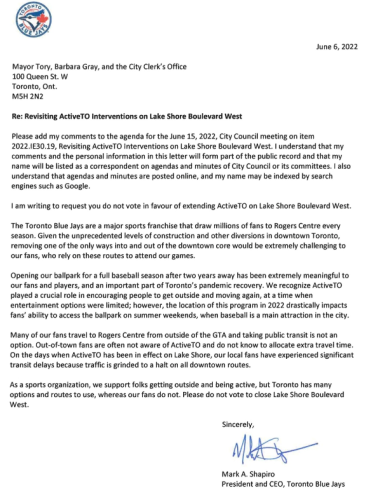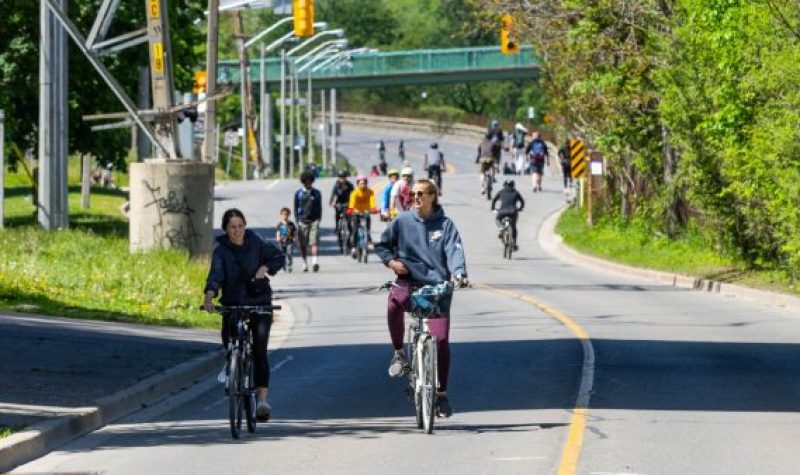Toronto City Council voted to limit ActiveTO on Lakeshore Blvd W. this summer during a recent meeting.
Several councillors said that the return of live events and pre-pandemic vehicle traffic along the roads will make it difficult to accommodate long closures for ActiveTO every weekend.
“We have made huge progress reopening Toronto and that progress is going to continue," said Toronto Mayor John Tory during the meeting. "City staff are working to accommodate and balance, as much as possible, all the major events across the city that are now back. ActiveTO was a great pandemic program and city staff will work to make sure the program continues where and when it is possible.”
Tory said he supports ActiveTO, but said it would not be possible to maintain the schedule and extent of closures it had at the height of COVID-19.
ActiveTO was established during the COVID-19 pandemic to allow cyclists and pedestrians to enjoy the roads along the waterfront without any cars permitted. Part of the incentive was to encourage residents to return to the downtown core when the majority stayed home.
A recent report from the city reads that decreased traffic during the pandemic allowed closures at these major roadways, but it is becoming unsustainable with the removal of most in-person restrictions.
Barbara Gray, general manager of Transportation Services, answered questions from city councillors regarding the longevity of ActiveTO on the Lakeshore.
She said the large influx of live, in-person events was not expected this summer, especially since last summer saw only one event permit for the Lakeshore, and zero in 2020.
Also, according to May 23 and 29 data in the report, Grey said that cyclists and pedestrians during ActiveTO this year are significantly less than last year, and the reduction of the program would help give event organizers more notice in scheduling.
Etobicoke Centre councillor Stephen Holyday said that while he advocates for public transportation, it is not always possible for all individuals and families. He said having the Lakeshore open would help connect residents in the Greater Toronto area with the downtown core.

President and CEO of the Blue Jays, Mark Shapiro, wrote to the city asking John Tory,Barbara Gray and the city clerk office to vote against the extension of ActiveTO. Photo provided by Alex Seixeiro.
Supporters of ActiveTO have gone onto social media to express their displeasure with its reduced route along the Lakeshore - many said the city is intentionally making the city less accessible with more cars on the roads.
A large source of criticism draws from Toronto Blue Jays president Mark Shapiro. He wrote to the Tory, Grey and the city clerk office asking them to not vote in favour of extending ActiveTO.
In the letter, he writes that the weekend closures limit fans’ abilities to get to the Roger Centre with uncertain delays and traffic during the closure. This includes commuters from outside the downtown core that do not have access to public transportation, Shapiro writes.
Opposition to Shapiro includes Bike Share TO, a group dedicated to making the city more bike friendly. For the Blue Jays’ weekend home games this month, the group is organizing meet ups to encourage attendees to bike to the Rogers Centre collectively, according to their Twitter account.
Advocates for safer roads for cyclists, including injury lawyer David Shellnutt, writes on Twitter that the closures allowed cyclists and pedestrians to feel a lot safer in the city, especially during the weekends.
While areas part of ActiveTO like Bayview Ave. and Black Creek Drive remain open, Lakeshore was arguably the most popular destination and at the centre of the city.
More details to come.
Listen to CJRU's coverage of ActiveTO's vote in city council:


